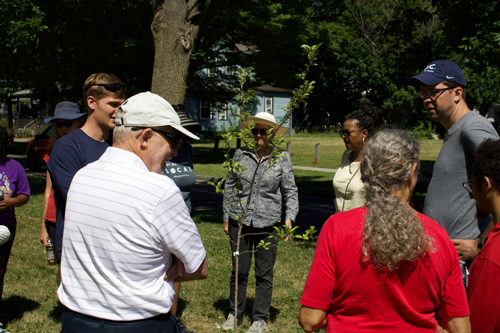Built Environment
Built Environment
A community environmental health priority-setting process completed in 2024 identified several environmental health issues related to the built environment, including difficulty accessing resources, heat, legacy contamination, and urban tree cover. The CEC has a long history of working with local partners to increase awareness of the impacts of the built environment on health and build capacity to address these issues.
Health Impact Assessment
Health Impact Assessment (HIA) is a policy and planning tool used to provide decision-makers with information about how their proposed plans and policies will likely impact the health of the communities they serve. In 2011, the CEC convened the Rochester Health Impact Assessment (HIA) Learning Collaborative. Now facilitated by the Finger Lakes Health Systems Agency, the HIA Learning Collaborative aims to educate community leaders about HIA, promote its application in our area, and explore its long-term potential to improve community health through local decision making.
The CEC continues to actively promote HIA in the Rochester community through this collaborative and other efforts that bring environmental health information into local decision making. In 2012-2013, CEC staff also conducted an HIA of the City of Rochester's Local Waterfront Revitalization Program (Healthy Waterways).
Learn about HIA and read about Healthy Waterways
Local and State Planning
The CEC is frequently invited to participate in local planning processes. CEC staff have participated in or reviewed city, county, and state plans for extreme heat, land-use, urban forestry, and more.
 Tree Canopy Initiative
Tree Canopy Initiative
In 2022, the CEC supported the Tree Canopy Initiative through the Capacity Building Project program. Cornell Cooperative Extension of Monroe County (CCE) partnered with the Marketview Heights Neighborhood Association and City of Rochester Forestry Division to canvass households in a neighborhood with interest in expanding its limited tree canopy. Informed by urban forestry initiatives in other cities, CCE and community volunteers surveyed residents and identified 30 locations for planting new trees with community buy-in. Learn more about the project.